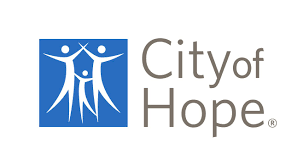
Walking Program Improves Ambulation in Patients with Hematologic Cancer

A walking program dramatically increased the number of steps walked by patients being treated for hematologic malignancies.
A walking program dramatically increased the number of steps walked by patients being treated for hematologic malignancies at City of Hope National Medical Center in California, according to a poster on the program presented at this year’s Oncology Nursing Society (ONS) Annual Congress.
After noticing decreased ambulation by patients during their hospitalization, in addition to increased fall rates and a decrease in documentation of ambulation in electronic medical records, presenter Kimberly Mercado, MSN, RN, BMTCN, and her colleagues decided to implement a walking program for patients to increase ambulation and decrease falls.
“We really wanted to give them a program that would help them to get motivated to exercise on the unit and kind of get out of their rooms, and keep up their stamina while they're receiving this treatment. Because as we all know, these treatments can be quite debilitating as in especially during COVID,” Mercado said during her poster presentation. “When the visitor policies don't allow for very many visitors, we wanted to make sure they had something to look forward to during their day and kind of get out and move.”
Additionally, Mercado explained, a walking program could also potentially be beneficial to patients suffering from cancer-related fatigue, as exercise had been previously shown to improve this side effect.
To start, Mercado and her colleagues created a brochure that explained the program to newly admitted patients and used foot-shaped necklace charms as incentives that patients could earn with each milestone they achieved. “Anytime a patient walked a lap, they could get a foot charm and hang it on their IV pole on a little chain to kind of remind them how much they've walked,” Mercado explained, “And it became nice for them to collect and understand how just how well they were doing.”
“Another incentive we gave was a reusable City of Hope mask that if anybody walked to 5K (3.1 miles) while they were on the unit, they would be given this to take home with them,” Mercado added.
Mercado and her colleagues also hung motivational posters throughout the unit to help keep patients motivated and moving.
A staff education component was implemented through emails, flyers, and in meetings, with the goal of explaining the program and offering tips how to encourage patients to participate.
One of the biggest interventions in the program, Mercado noted, was a change in workflow that asked night shift nurses to chart the amount of feet walked by patients throughout their day with the intention of standardizing charting and recording accurate ambulation data.
At baseline, patients walked an average of 136 steps in a 24-hour period. After implementing the program, that number was up to an average of 847 steps a few weeks into the program, and further increased to an average 1,018 steps per day at the end of one month.
While fall data is still being collected, the number of inpatient falls decreased from 6 in Q1 of 2020 to 4 in Q1 of 2021 thus far. Additionally, the number of falls with injury was 0, compared to 1 in 2020. To Mercado and her colleagues, this data, coupled with the dramatic increase in daily steps, signaled a success. “Patients seem to really take to it and enjoy it as well,” she noted.
“So as we go along, we obviously want to keep doing this program on our floor. Maybe it could even go house-wide at some time,” she said.
In addition to evaluating fall data, going forward, Mercado concluded that she and her colleagues plan to gather patient feedback to further improve upon the walking program and add additional incentives such as challenge coins, pins, and patches for completing milestones such as distances of 10 kilometers (6.2 miles), a half marathon (13.1 miles) or even marathons (26.2 miles).
“If you can walk a marathon while you're getting cancer treatment, that's incredible,” Mercado said.
Reference:
Mercado K. Implementation of A Walking Program For Hematology Patients. Presented at: Oncology Nursing Society 46th Annual Congress; April 20, 22, 27, and 29, 2021. ePoster 1880.
Newsletter
Knowledge is power. Don’t miss the most recent breakthroughs in cancer care.































































































